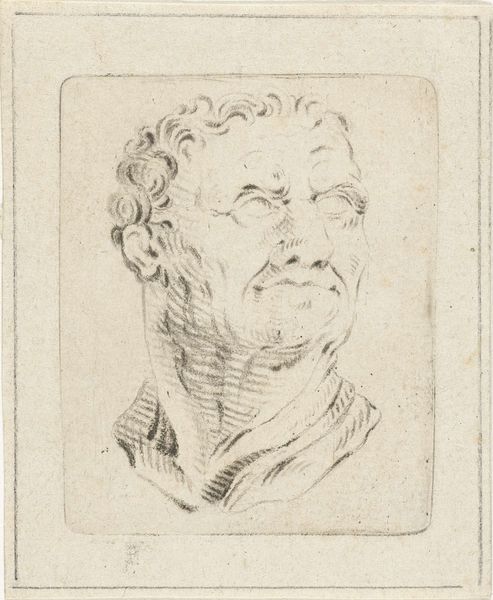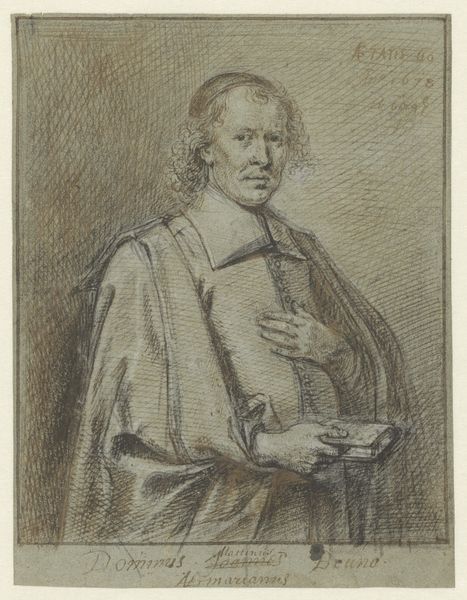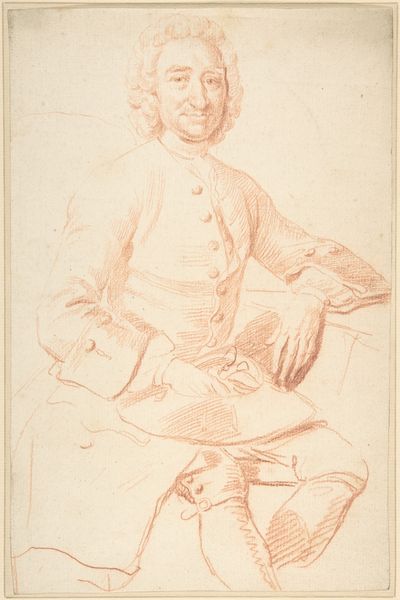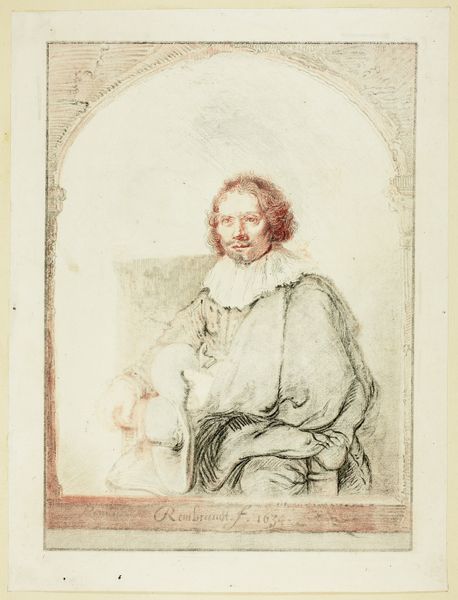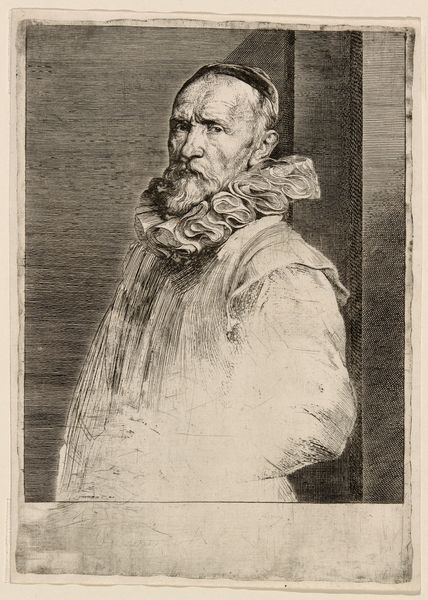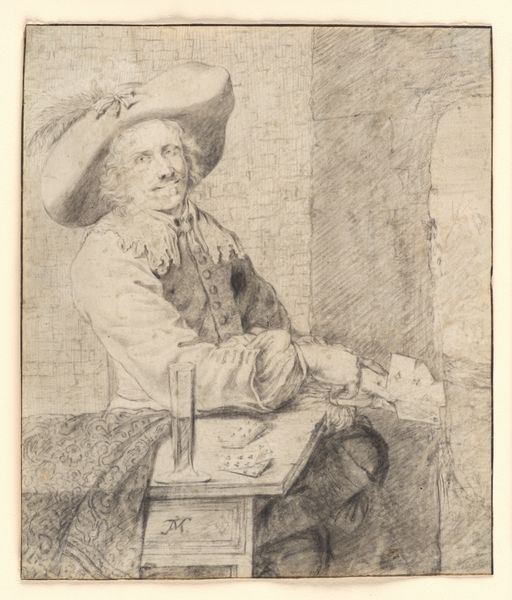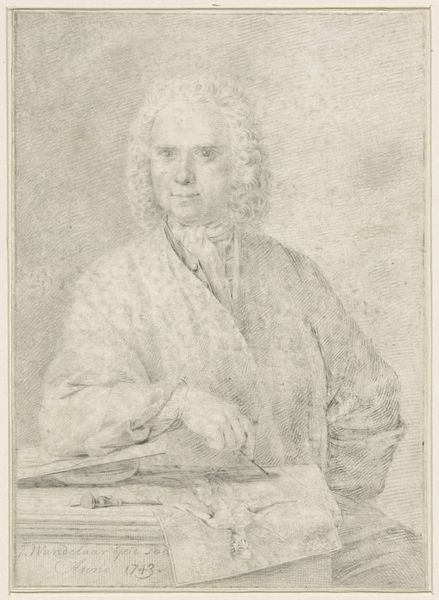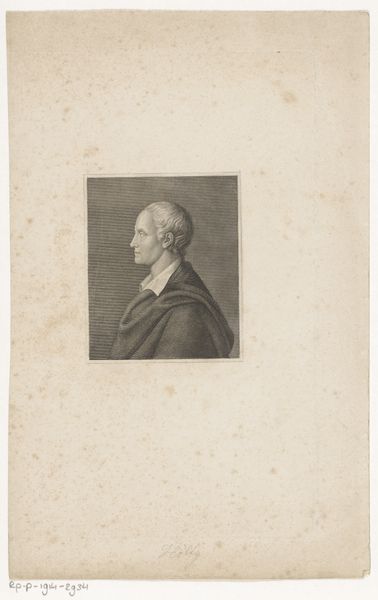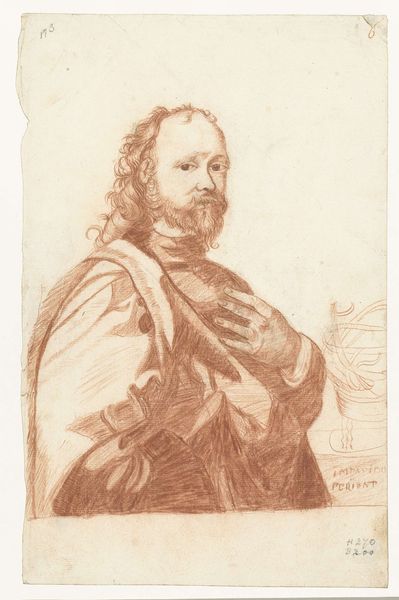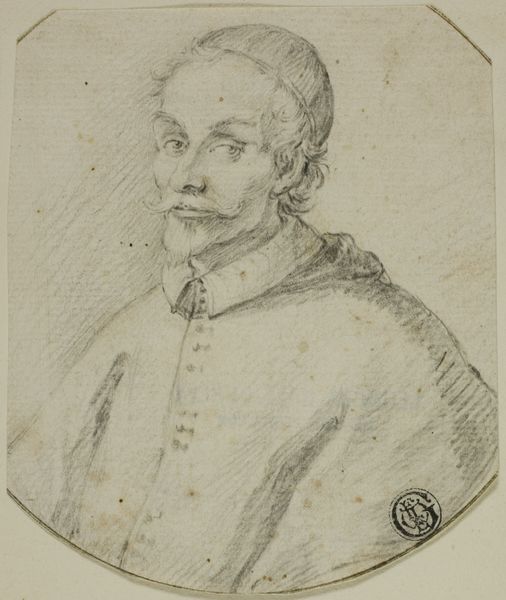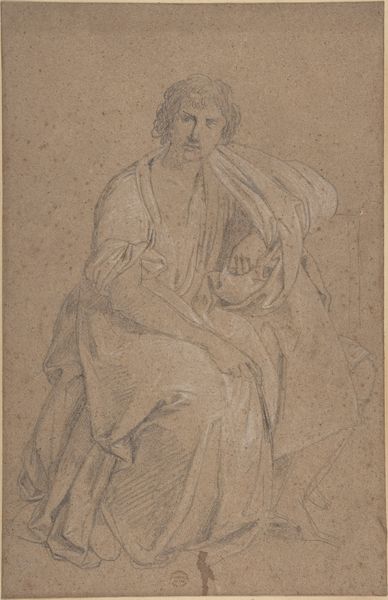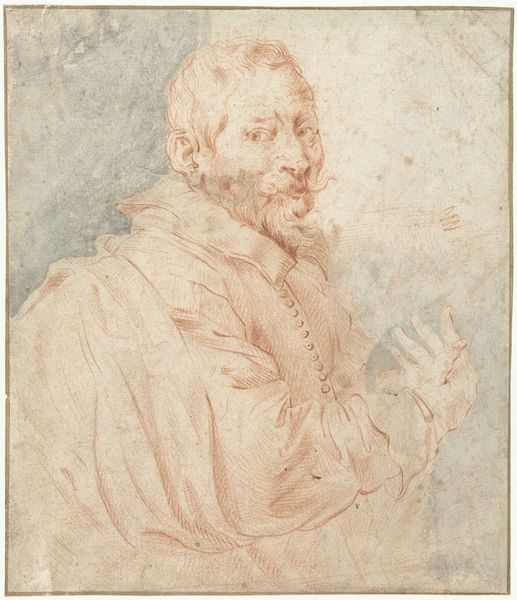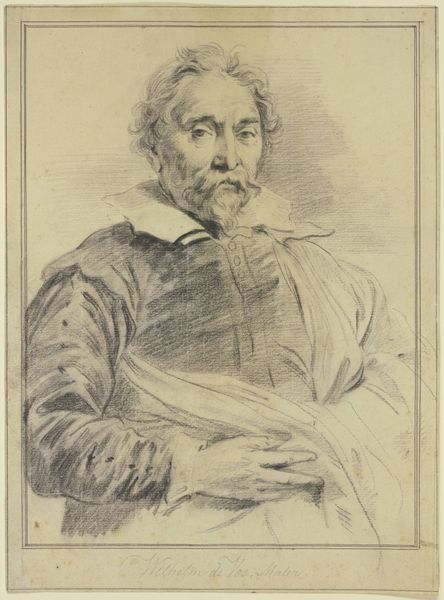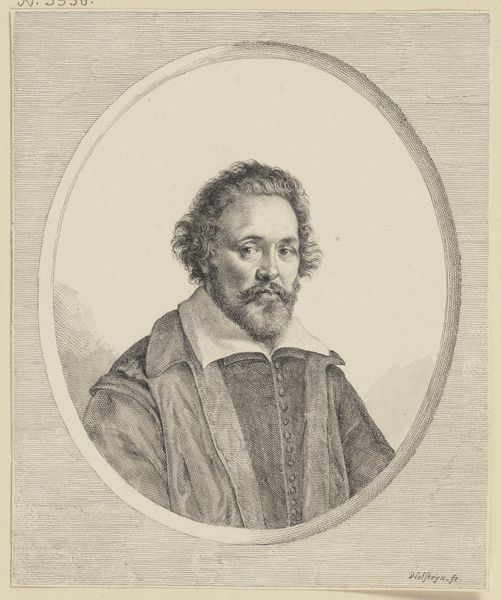
drawing, print, pencil, graphite
#
portrait
#
drawing
# print
#
pencil sketch
#
charcoal drawing
#
11_renaissance
#
pencil drawing
#
pencil
#
graphite
#
northern-renaissance
Dimensions: 9 3/8 x 6 11/16 in. (23.8 x 17 cm)
Copyright: Public Domain
Curator: This is a portrait of Cornelis de Vos, dating back to the 16th century. The work, rendered in graphite, pencil, and other drawing media, can be found right here at the Metropolitan Museum of Art. Editor: It's fascinating! The shading creates a sort of somber mood. I'm particularly drawn to the contrast in textures. Curator: Absolutely. And consider that de Vos lived during a tumultuous period marked by the Dutch Revolt and religious conflict. Portraiture served to consolidate identity and status within complex political landscapes. The slight details, like his buttoned shirt and draped coat, broadcast a very certain socio-economic positioning. Editor: Agreed. The careful lines forming his expression reveal both composure and a hint of something more subdued. The artist masterfully uses light and shadow, with the upper part of the sketch almost faded into the white while other features—his hands, particularly—pop into sharp focus. What are your thoughts about that hand placement? Curator: Good observation! The hands tell us so much about class and self-awareness at the time. Notice how carefully he holds the fabric, but without pretension. Editor: Yes, that connects with your broader point about his identity! The Northern Renaissance placed so much importance on naturalism, and it's on display here in the delicate rendering of form—we can nearly see the folds in his clothing and texture of his hair. I am curious how the original function of this drawing impacted its look; was it meant to be reproduced as a print? Curator: Well, there is no consensus. However, de Vos’ role as a leading painter of his era makes it all the more crucial to consider this print not just as aesthetic practice but also as a marker of artistic success. Editor: I’m intrigued by how an approach rooted in visual form complements a wider frame on gender, race, and status. It is almost as if by visually analyzing the drawing we uncover the politics inherent in representation. Curator: Precisely! By delving into the social position and life circumstances of Cornelis de Vos, as well as acknowledging the artistry involved, we create an image not simply frozen in history, but vibrant in intersectional relevance. Editor: Indeed, it makes me further appreciate how understanding visual composition can lead to even more insights. Thank you. Curator: A most valuable point, and I'm glad we’ve shared a moment to engage deeply with it.
Comments
No comments
Be the first to comment and join the conversation on the ultimate creative platform.
